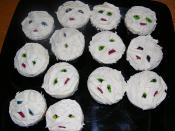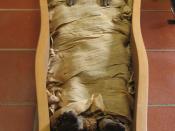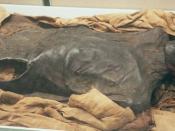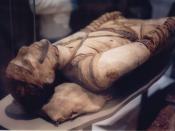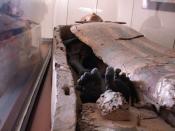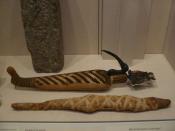Bibliography Wilcox, Charlotte Mummies and their mysteries Carolrhoda Books, Inc./Minneapolis McHargue, Georgess Mummies J.B. Lippincott Company/Philadelphia and New York Mastin Pace, Mildred Wrapped for Eternity, The story of the Egyptian Mummy McGraw-Hill Book Company New York Egyptian Mummies A mummy is a body of a human or animal in which some of the soft tissues, skin, muscles, or organs did not decay after death. A mummy is different from a skeleton or a fossil. Mummies are made naturally or by embalming, which is any process used to preserve a dead body. In early times, bodies were simply wrapped in cloth or leather and buried in the sand. Warm desert winds and hot sun heating the sand caused bodies to dry out very quickly so they did not decay. All body organs were removed. The brain in most cases was not saved, but the heart is left inside the body.
Egyptians believed people's thoughts came from the heart muscle and not the brain. The body was packed in natron, a salt similar to what is used in water softeners today. Jewels and charms were placed over the mummies eyes, fingernails and toenails were painted with gold or silver. Oil, perfume and spices were rubbed on the skin. The mummies hair was styled and make up was put on.
The mummy was wrapped in about 150 yards of long linen stripes. Resin was added to make the layers stick. The layers of cloth and resin formed a hard casing, called the cartonage. A human face was often painted on the cartonage or a mask was placed over the head.
The mummy was then placed in a series of coffins.
